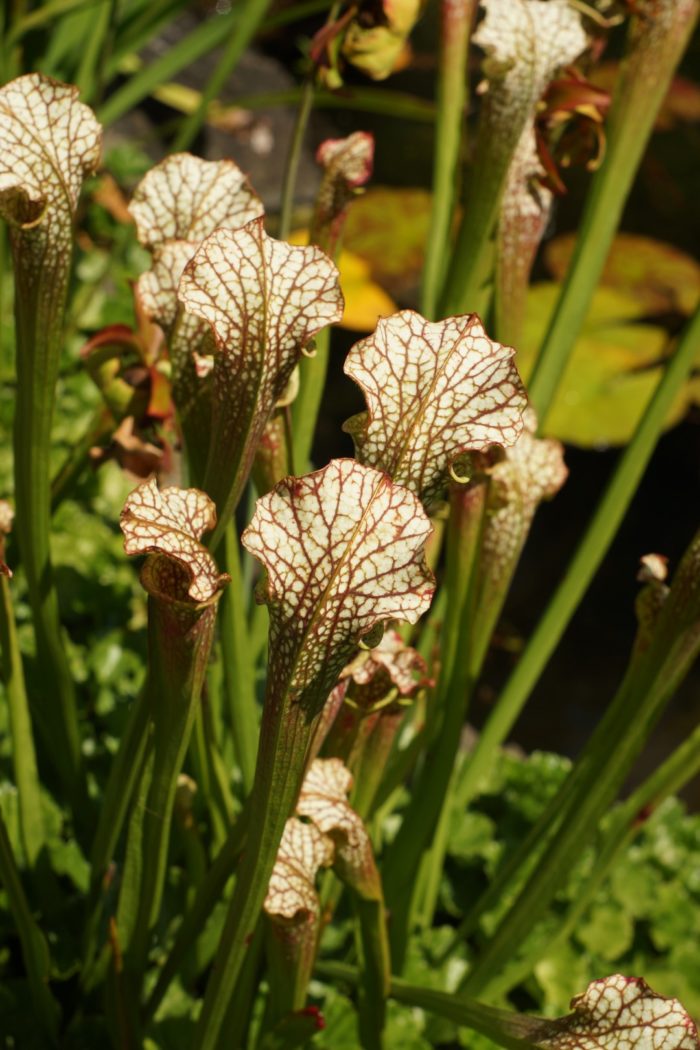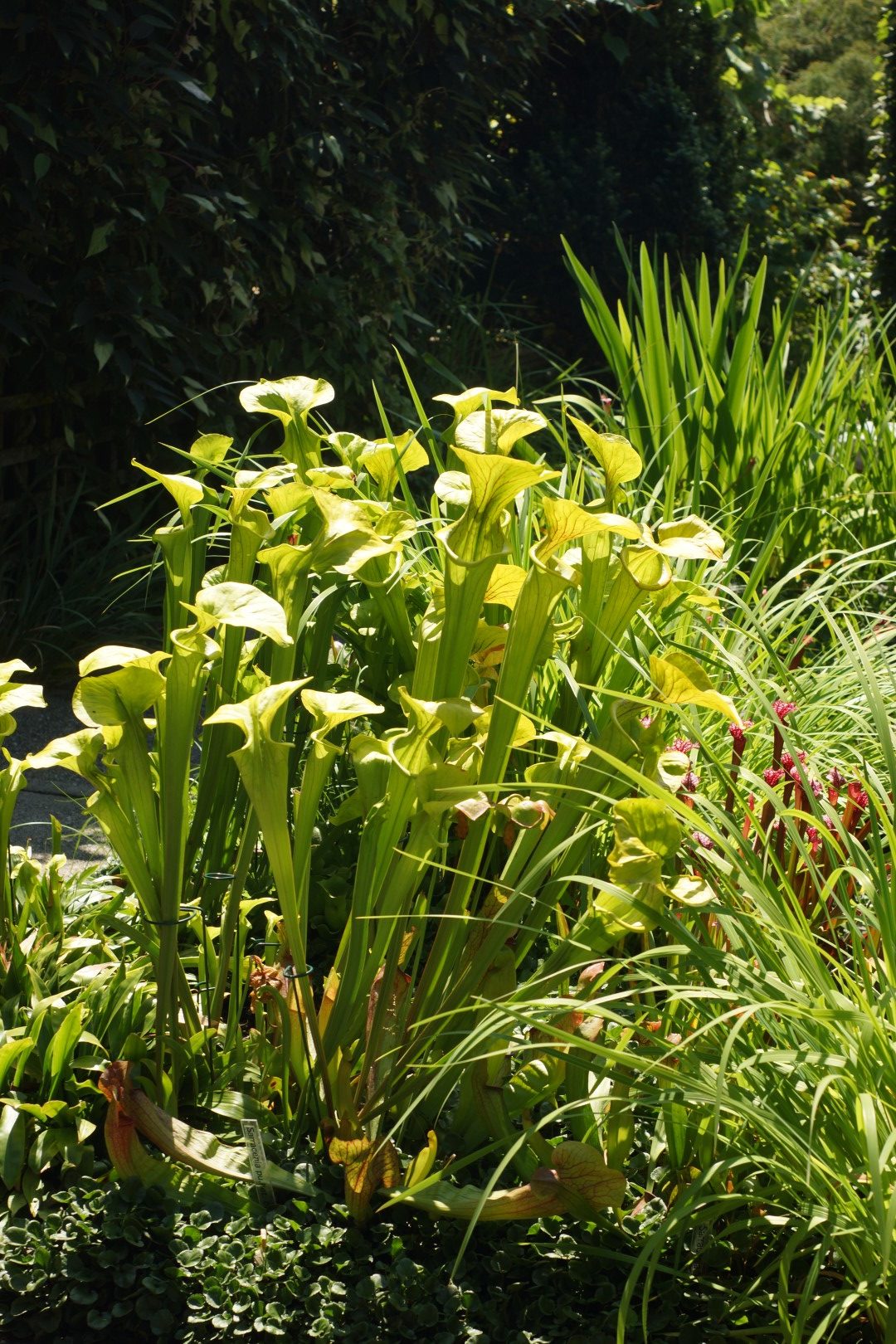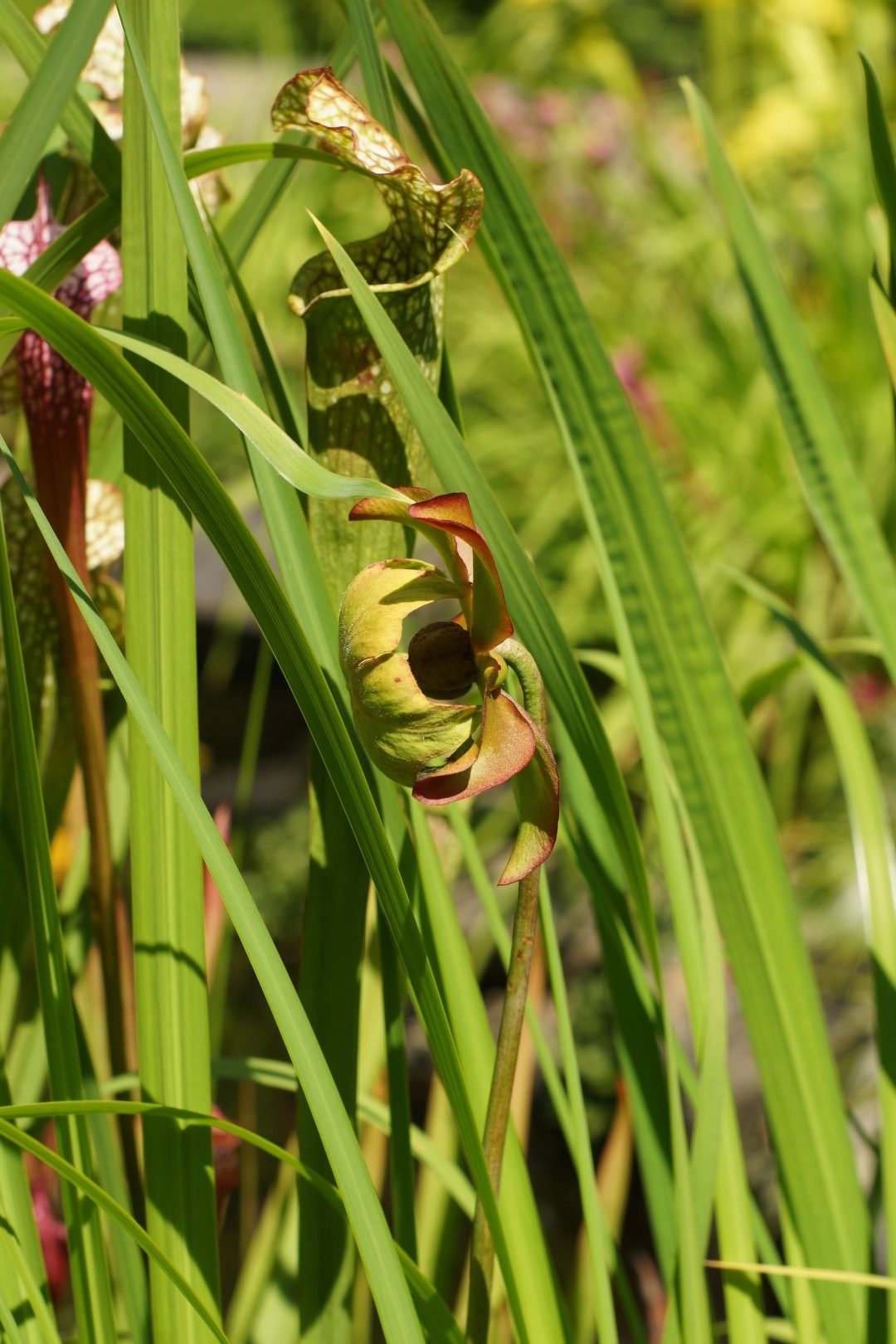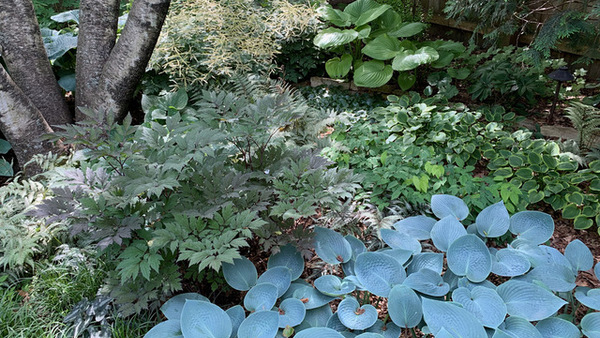
Today we’re taking one last trip to the beautiful gardens of Heronswood (check out the first post in the series for more on this iconic garden) with a final set of photos from Cherry Ong. Today the focus is on the bog garden, which is full of beautiful pitcher plants—one of Cherry’s favorites!
 The bog garden surrounds a small pond and is planted with a variety of moisture-loving plants, but most colorful are the pitcher plants (Sarracenia spp. and hybrids).
The bog garden surrounds a small pond and is planted with a variety of moisture-loving plants, but most colorful are the pitcher plants (Sarracenia spp. and hybrids).
 Pitcher plants are native primarily to the southeastern United States, though Sarracenia purpurea is found in the north, even up into Canada. Most species and hybrids are hardy to Zone 6, and many, especially Sarracenia purpurea and its hybrids, are hardy to Zone 5 or even colder.
Pitcher plants are native primarily to the southeastern United States, though Sarracenia purpurea is found in the north, even up into Canada. Most species and hybrids are hardy to Zone 6, and many, especially Sarracenia purpurea and its hybrids, are hardy to Zone 5 or even colder.




Have a garden you’d like to share?
Have photos to share? We’d love to see your garden, a particular collection of plants you love, or a wonderful garden you had the chance to visit!
To submit, send 5-10 photos to GPOD@finegardening.com along with some information about the plants in the pictures and where you took the photos. We’d love to hear where you are located, how long you’ve been gardening, successes you are proud of, failures you learned from, hopes for the future, favorite plants, or funny stories from your garden.
If you want to send photos in separate emails to the GPOD email box that is just fine.
Have a mobile phone? Tag your photos on Facebook, Instagram or Twitter with #FineGardening!
You don’t have to be a professional garden photographer – check out our garden photography tips!
Do you receive the GPOD by email yet? Sign up here.
Fine Gardening Recommended Products

The Nature of Oaks: The Rich Ecology of Our Most Essential Native Trees
Fine Gardening receives a commission for items purchased through links on this site, including Amazon Associates and other affiliate advertising programs.

ARS Telescoping Long Reach Pruner
Fine Gardening receives a commission for items purchased through links on this site, including Amazon Associates and other affiliate advertising programs.

Pruning Simplified: A Step-by-Step Guide to 50 Popular Trees and Shrubs
Fine Gardening receives a commission for items purchased through links on this site, including Amazon Associates and other affiliate advertising programs.


















Comments
Great pics!
I love pitcher plants. Thanks for taking us on this trip to Heronswood, Cherry!
Wonderful photos of these most interesting plants. I was surprised to find them growing in the boggy soil of the Ridges Sanctuary in Door County, Wisconsin where it assuredly gets VERY cold in the winter. They were gorgeous in early September.
Some pitcher plants grow in the Pine Barrens of southern New Jersey along with some native orchids.
Nice photos of the bog garden!
Log in or create an account to post a comment.
Sign up Log in